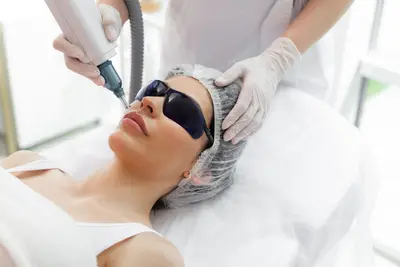In today’s ever-evolving beauty landscape, lasers are taking center stage as a powerful, non-invasive solution for skin rejuvenation. These advanced treatments target common skin concerns—such as aging, uneven texture, and discoloration—by harnessing light energy to revitalize the skin from within. This article delves into how these modern lasers work, the benefits they offer, potential side effects, and how they compare to traditional methods. By understanding these breakthroughs, you’ll be better equipped to decide if laser therapy is the right path for your skincare journey.

Understanding How Lasers Work
Laser skin treatments use focused beams of light at specific wavelengths to reach different skin layers. This process triggers collagen production and accelerates cell renewal, which helps reduce fine lines, acne scars, and blotchy pigmentation.
Different laser types serve different purposes:
- Ablative lasers resurface the skin by removing outer layers, ideal for deeper wrinkles and texture concerns.
- Non-ablative lasers work beneath the skin to stimulate repair with less surface disruption and minimal downtime.
- Fractional lasers create microscopic injuries in targeted areas, speeding up healing and delivering noticeable improvements.
Choosing the appropriate type depends on your skin goals and how much recovery time you’re willing to manage.
The Latest Advances in Laser Technology
Innovation continues to shape the field of laser rejuvenation. One standout development is the picosecond laser, which emits ultra-fast pulses that break up pigment and stimulate the skin with exceptional precision. It delivers faster results and reduces the chance of damage or prolonged recovery.
Another exciting trend is the integration of artificial intelligence into laser systems. AI enables devices to analyze the skin’s condition in real time and tailor the treatment accordingly—resulting in safer, more personalized outcomes.
Combination treatments are also gaining momentum. Many clinics now pair laser therapy with regenerative solutions like PRP (Platelet-Rich Plasma), which enhances healing and boosts collagen production.
Why Patients Choose Laser Rejuvenation
Laser skin therapy offers a range of benefits:
- Non-surgical solution with shorter recovery time
- Visible results after one or a few sessions
- Effective for addressing wrinkles, sun spots, and acne scars
- Long-lasting effects with proper skin maintenance
Many patients report smoother, younger-looking skin and improved self-esteem, making lasers a go-to option for those seeking effective, fast-acting skincare.
Important Risks and Considerations
As with any cosmetic procedure, laser treatments do carry some risk. Side effects such as redness, swelling, and temporary sensitivity are common. In rare cases, issues like hyperpigmentation or scarring may occur, particularly in individuals with darker skin tones.
A professional consultation is crucial. Dermatologists often conduct patch tests to assess how your skin will respond before performing a full treatment.
Costs can also vary, with advanced systems and experienced practitioners commanding higher fees. Fortunately, many clinics offer payment plans to make the investment more manageable.
Aftercare Tips and What to Expect
Post-laser care plays a major role in achieving lasting results. Key steps include:
- Avoiding sun exposure
- Using high-SPF sunscreen
- Applying gentle moisturizers
- Following a dermatologist-approved skincare routine
While some results may appear in days, optimal improvements typically develop over several weeks as collagen continues to rebuild.
With the right care and follow-up, laser treatments can offer transformative, long-term benefits—often with fewer risks than surgical procedures.
